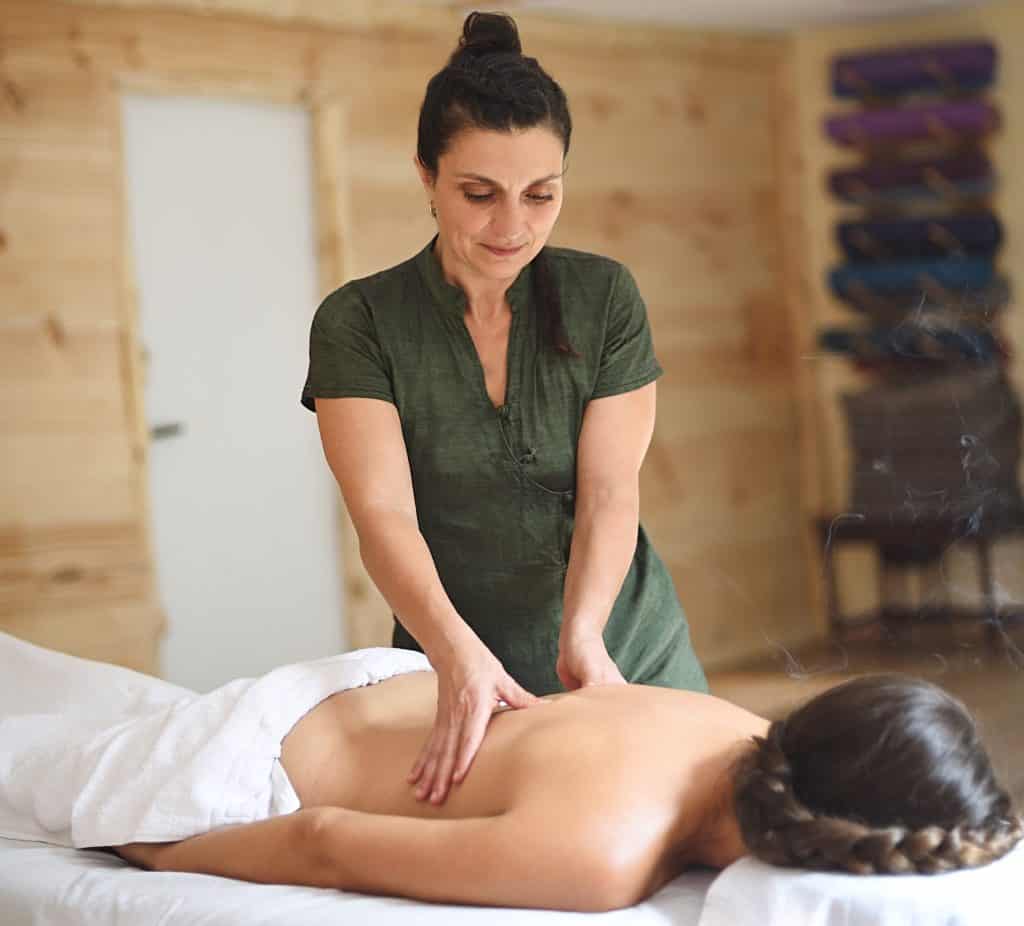

 Want to earn continuing education credit for this article? Learn more.
Want to earn continuing education credit for this article? Learn more.
Neuromuscular therapy (NMT) applies static pressure and stretching techniques to specific myofascial points for pain relief. NMT employs soft tissue manipulation to balance the musculoskeletal and central nervous systems. To relieve pain, NMT directly addresses the following pain-causing elements:
- Ischemia: The lack of oxygen due to the reduced blood supply can cause pain.
- Nerve Compression or Entrapment: Pressure on a nerve by soft tissue, cartilage, or bone.
- Postural Distortion: Imbalance of the muscular system resulting from the body’s movement off the longitudinal and horizontal planes.
- Biomechanical Dysfunction: Imbalance of the musculoskeletal system resulting in faulty movement patterns.
Lumbar Muscle Spasms
Lumbar muscle spasms are involuntary contractions typically occurring due to a muscle strain. A muscle strain is the stretching or tearing of a muscle usually from the muscle being stretched beyond its limit or it was forced to contract too strongly.
Strains in the lumbar region are commonly due to exercising excessively or performing a movement beyond a muscle’s range of motion. Sudden movements that claim a majority of lumbar strains include:
- Unexpected jarring, such as an automobile accident
- Quick twisting, such as a vigorous tennis backhand stroke
- Excessive muscle loading, such as picking up a heavy object
The body’s response to a muscular strain is to protect the involved muscle from further injury. This protection is accomplished through the contraction of its fatigued fibers to prevent further stretching. Unfortunately, a chain of pain-causing events can follow a muscle strain:
- The contraction of strained muscles typically restricts adequate blood flow to the area.
- Depending on the muscle’s location, its contraction can put pressure a nearby nerve. Termed nerve entrapment or compression, muscles squeezing a nerve can illicit intense radiating pain.
- A muscle strain can disrupt the body’s musculoskeletal balance. Postural distortion is the body’s mechanical method of protecting and compensating for an injury. Unfortunately, this distortion off the body’s midpoint sets the individual up for perpetuation of muscle strains, contractions, and even more pain.
- When an injury disrupts body function, the individual may change their movement patterns to minimize pain. This adaptation solidifies a musculoskeletal imbalance and can transform a simple strain into whole-body pain and dysfunction.
Muscle spasms can also occur as a reflex phenomenon caused by injured ligaments, infections, tumors, or chronic disc problems.
Lumbar Disc Problems
 Many disc abnormalities are a result of the aging process. Although pain from a herniated disc may come on suddenly, its cause generally occurs gradually, sometimes taking years to develop. Starting in young adulthood, discs naturally begin to dry up. The most likely location for changes to begin is the lower lumbar region, at the disc between the fourth and fifth lumbar vertebrae. Medical professionals speculate that this disc is most vulnerable due to the spine’s lumbar curve stress.
Many disc abnormalities are a result of the aging process. Although pain from a herniated disc may come on suddenly, its cause generally occurs gradually, sometimes taking years to develop. Starting in young adulthood, discs naturally begin to dry up. The most likely location for changes to begin is the lower lumbar region, at the disc between the fourth and fifth lumbar vertebrae. Medical professionals speculate that this disc is most vulnerable due to the spine’s lumbar curve stress.
As a result of the degeneration associated with aging, the disc slowly loses its ability to bounce back. The disc’s soft interior bulges outward in the first anatomic abnormality stage. This bulging disc presses against the ligament holding it in place. The pressure on the ligaments can pull on and strain nearby muscles, resulting in lumbar muscle spasms. Additional pain can ensue because the pressured ligament can impinge neighboring nerves. A worsening of this condition leads to disc herniation, where the inner core of the disc extrudes back into the spinal canal.
Breaking the Cycle
Fortunately, massage therapists practicing NMT have the tools to break the chain of events that can follow a lumbar strain. NMT uses trigger points (acutely sensitive spots) to identify and release pain referral patterns that are typical of lumbar strains in the following ways:
- Applying static pressure on a point to loosen the fibers thus stimulating blood flow to the area (which was previously deprived of adequate blood flow and oxygen). This circulation can release entrapped nerves and stop a muscle’s spasm.
- Because NMT involves postural evaluation, the practitioner can identify and treat the muscular source of a painful spasm pattern.
- NMT uses muscle fiber stretching to correct the imbalances fostered by unintentional muscular contraction.
In our society, lumbar spasms are a commonly encountered condition prompting healthcare visits. Including NMT in a massage therapy session can save your clients from the intense and unremitting pain of lumbar muscle spasms.
Earn continuing education credit for this article contained in our Low Back Pain series. Click here to enroll.











